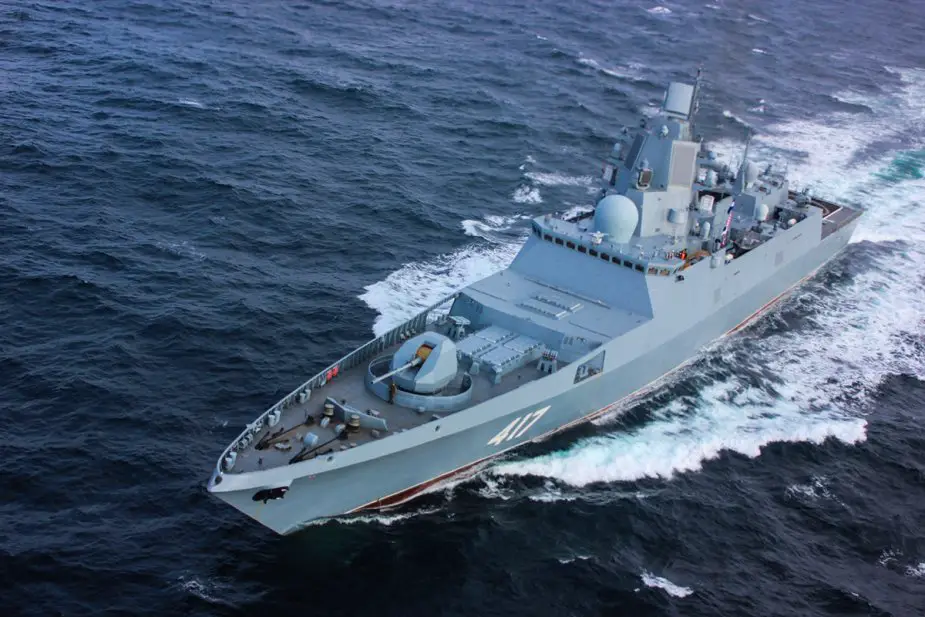Analysis: Project 22350 frigates save Russian shipbuilding - take 1
There was a landmark event in 2019 for the Russian Navy. Two new guided-missile frigates of amended project 22350 were laid. The series saved the Russian shipbuilding of surface warships. The Vzglyad business newspaper writes why the warships are important for Russia and which difficulties accompanied their construction.
 Project 22350 frigate (Picture source: Wikipedia)
Project 22350 frigate (Picture source: Wikipedia)
After the Soviet collapse, Russia engaged in the construction and rebuilding of available warships for export. Thus, India received an aircraft carrier (the rebuilt Admiral Gorshkov previously called the Baku) and a series of Talwar-class frigates known in Russia as project 11356. China received four destroyers of project 956. Vietnam got frigates of project 11661. The latest of them were armed with antisubmarine weapons and sonars. Missile boats were also built for Vietnam. Air-cushioned landing boats and submarines were exported.
They were all built by Soviet-era technologies and ideology and included late Soviet designs with minimal exceptions.
A technological revolution was developing in military shipbuilding in the world and no available ships met its requirements. Russia was close to a breakthrough in anti-ship missiles and designed new antisubmarine missiles. They demanded new warships, such as frigates of project 22350.
Their construction had to begin in the early 2000s, but Russia was not ready for innovative military shipbuilding at the time. The Admiral Gorshkov lead ship was laid only in 2006. It had to embody all advanced technologies, including the ability to fire cruise missiles, a powerful Poliment radar, anti-torpedoes, one of the best sonars and the main power plant with cruising diesel engines and boost gas turbines (operating simultaneously through a sophisticated reducing gear), and a powerful 130mm gun.
It was a truly advanced project, but it encountered numerous problems from the very beginning. They were caused by degrading design school and constant lack of finances from the Defense Ministry. The construction dragged in such conditions.
There were fears that the Gorshkov and the Admiral Kasatonov laid in 2009 would never be completed. In 2010, the Defense Ministry approved a program to build much simpler frigates of project 11356 which were a simplified option of warships constructed for India. Three of them were built and are operational in the Black Sea. Admiral Suchkov, a former aid to the defense minister, supported the idea and played a key role in arming the Black Sea fleet with frigates.
In 2012 and 2013, two other frigates of project 22350 were laid - the Admiral Golovko and the Admiral Isakov. In 2014, the project sustained a major blow after Ukrainian authorities stopped military-technical cooperation with Russia. Zorya-Mashproekt enterprise in Nikolayev stopped supplies of the main power plants. They were produced in cooperation. Russia supplied the diesel engine of Kolomna enterprise. Zorya engaged in the final assembly with its components and produced the reducer to connect the turbine and the diesel. The ban put the fate of frigates under construction in doubt. A major effort was necessary to assemble the main power plants for the two frigates from available Ukrainian components.
It was a difficult construction. Thus, air circulation inside corridors was so strong that doors could not be opened and there were pressure differences inside. Redut missiles with Poliment radar refused to operate. It took several years to resolve the problem. The complex had to be several times dismantled and placed back after an upgrade. There were hundreds of remarks to the warship and they could not be rectified and make the frigate operational on time. Besides, the Defense Ministry continued to underfinance the project.
© Copyright 2020 TASS. All rights reserved. This material may not be published, broadcast, rewritten or redistributed.


























